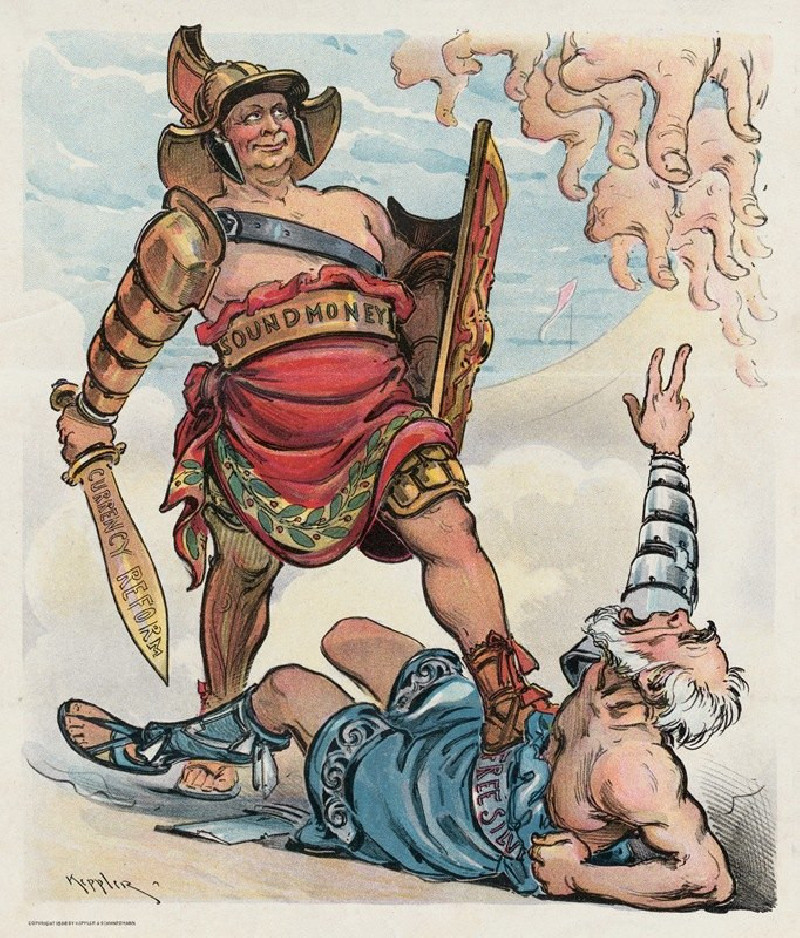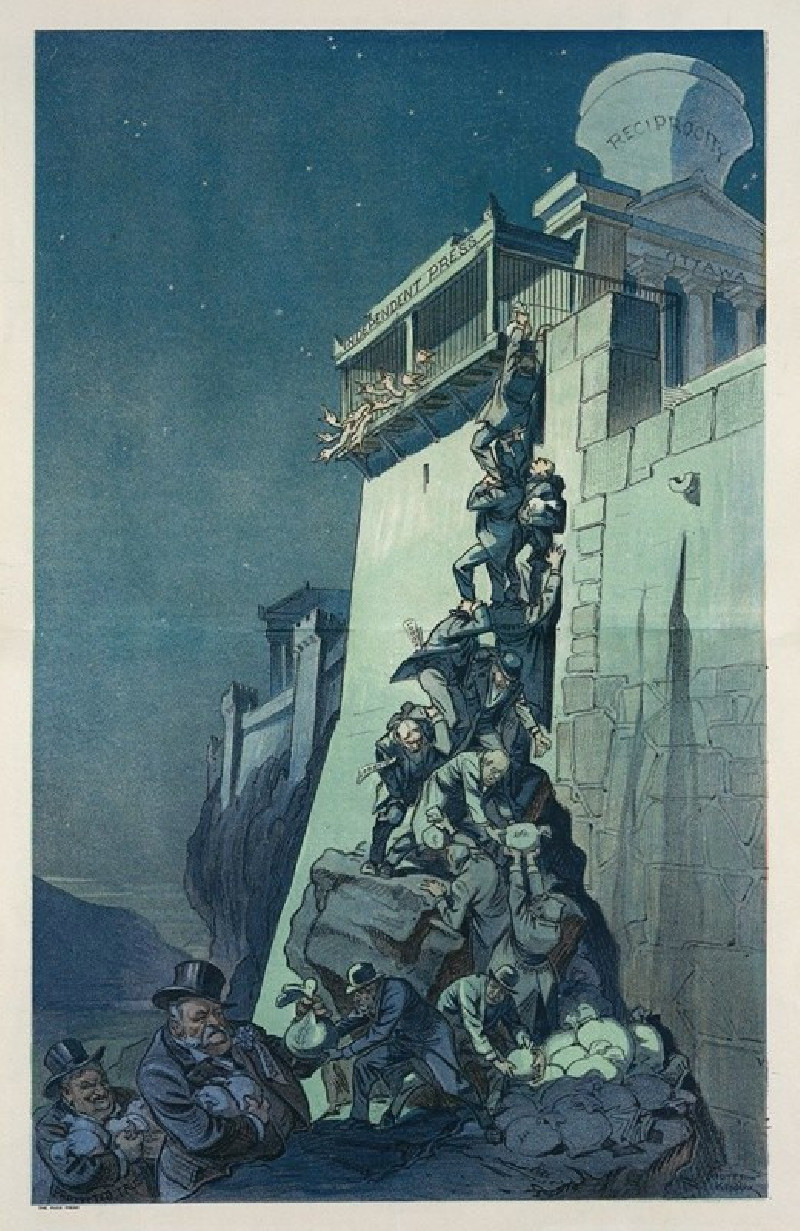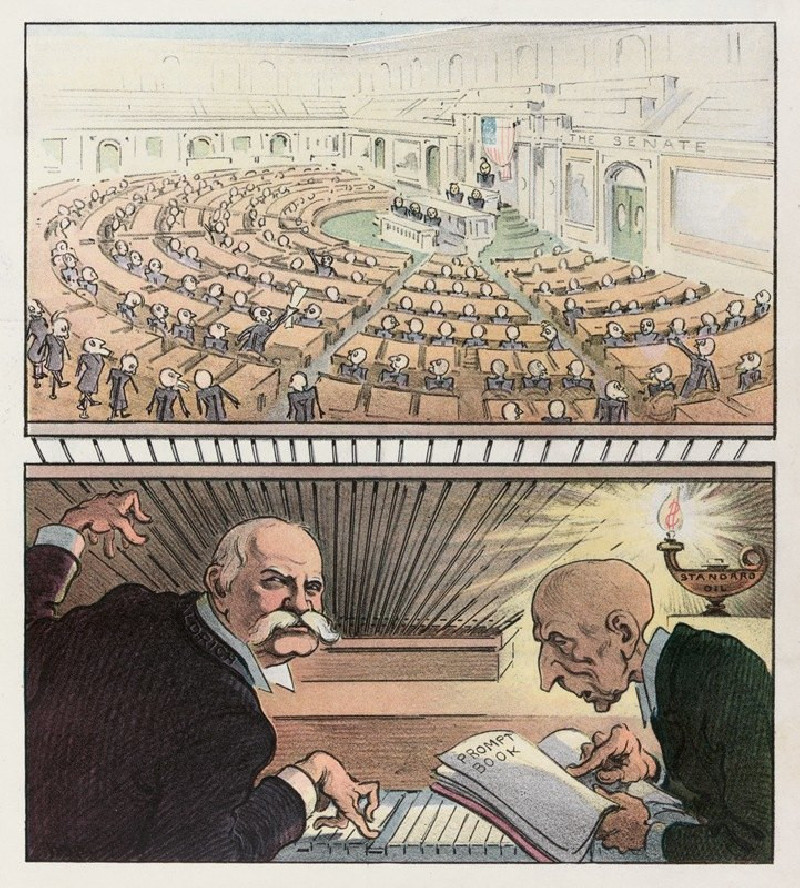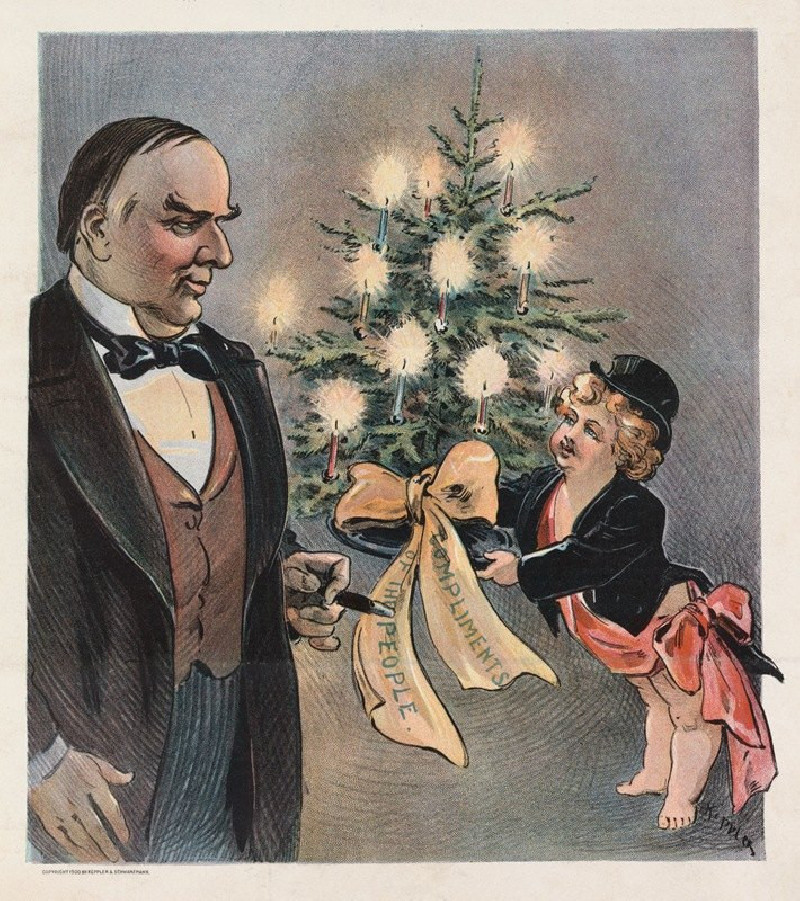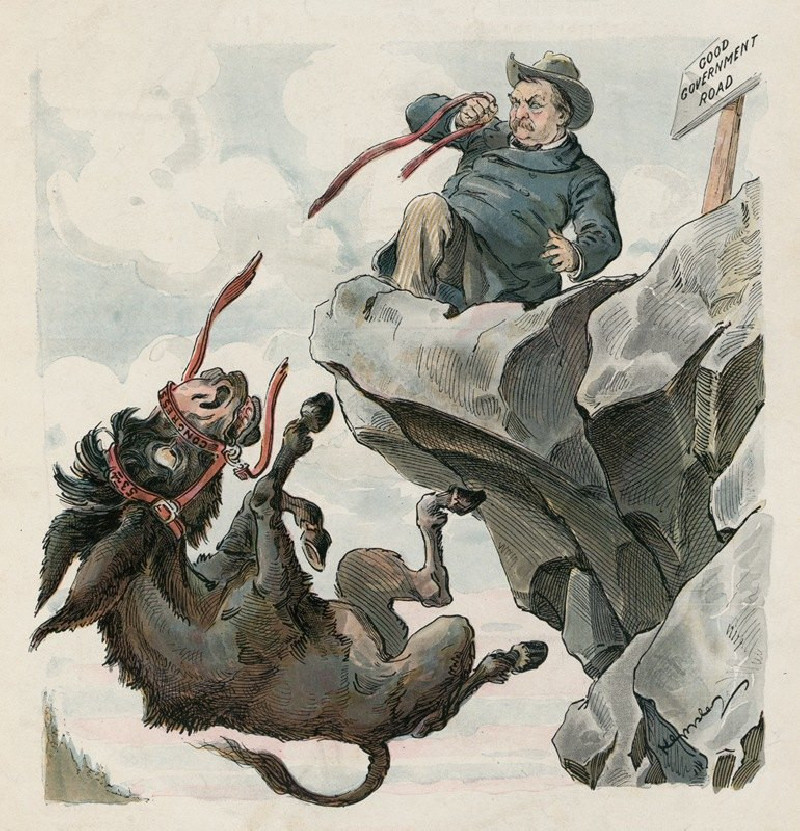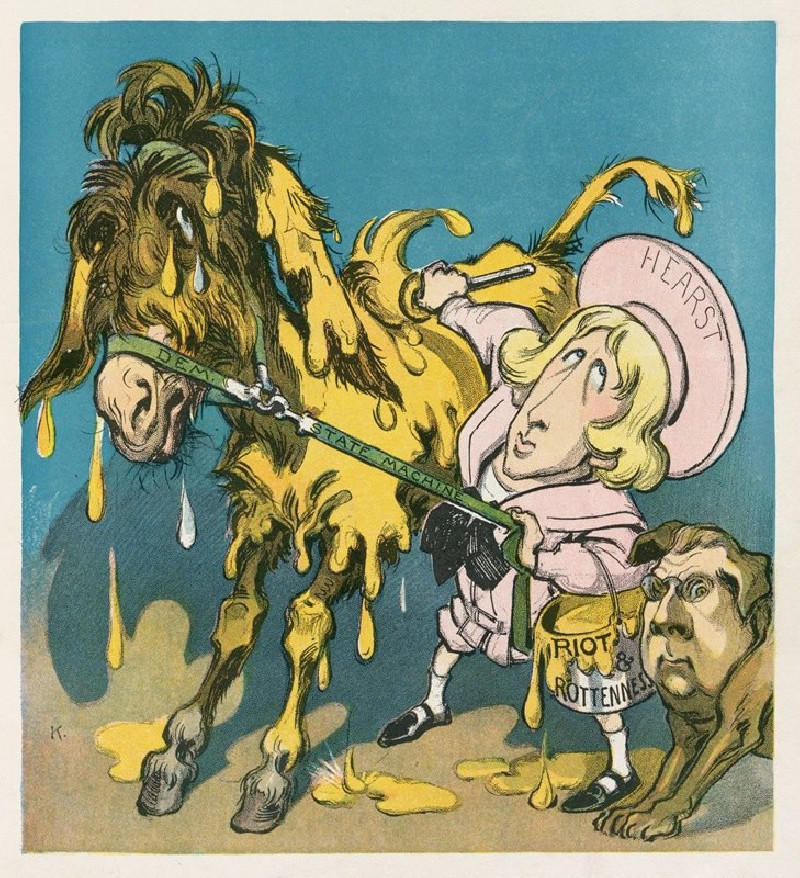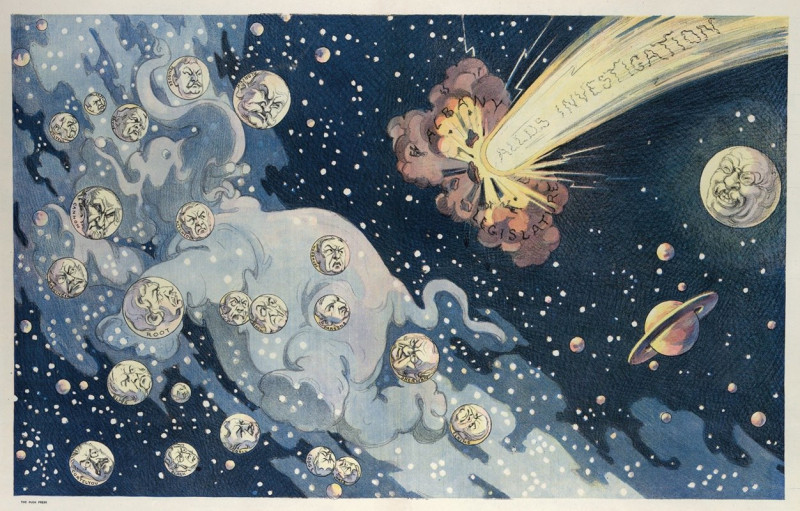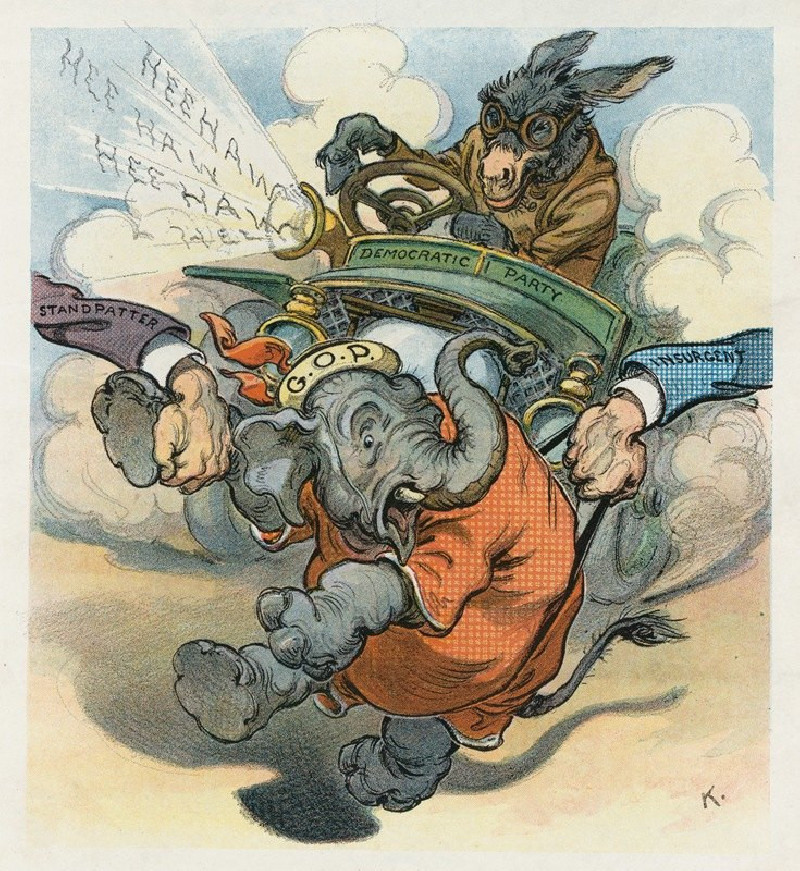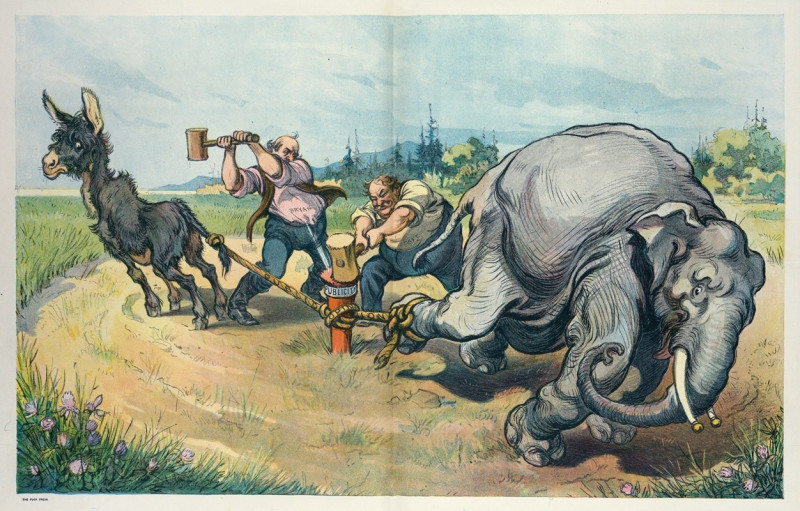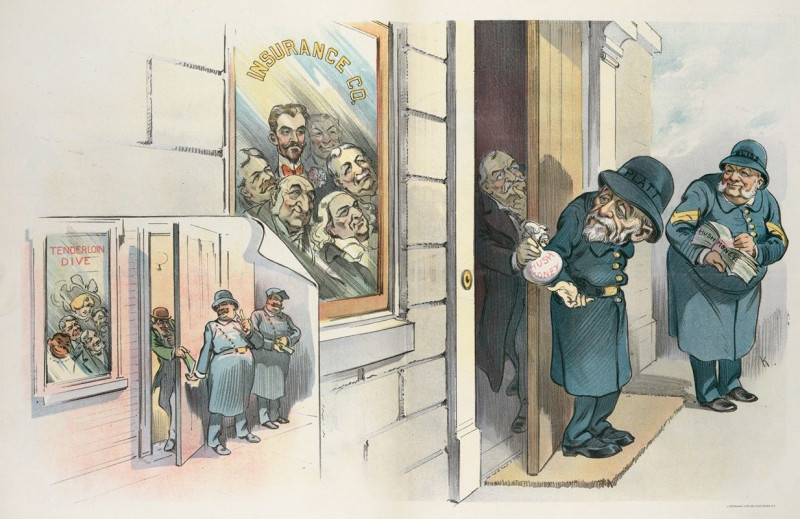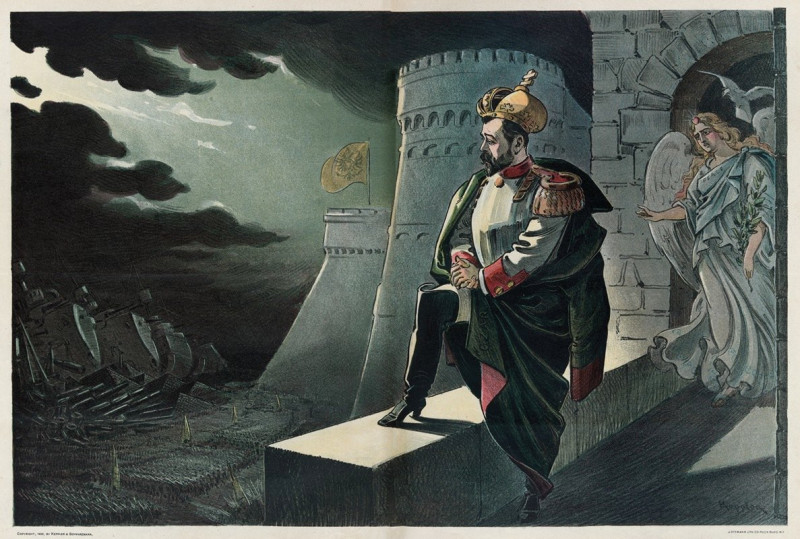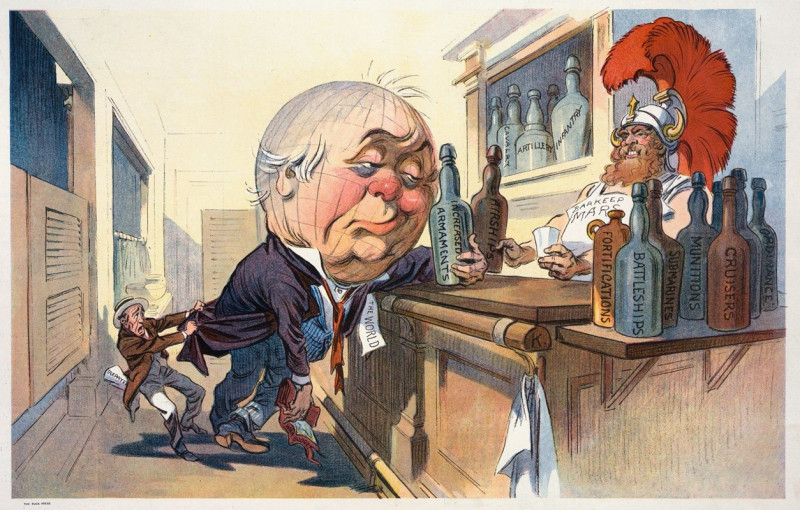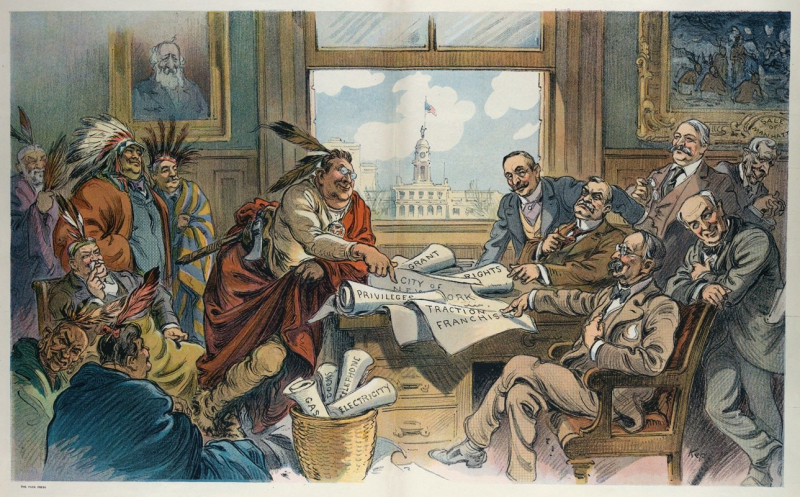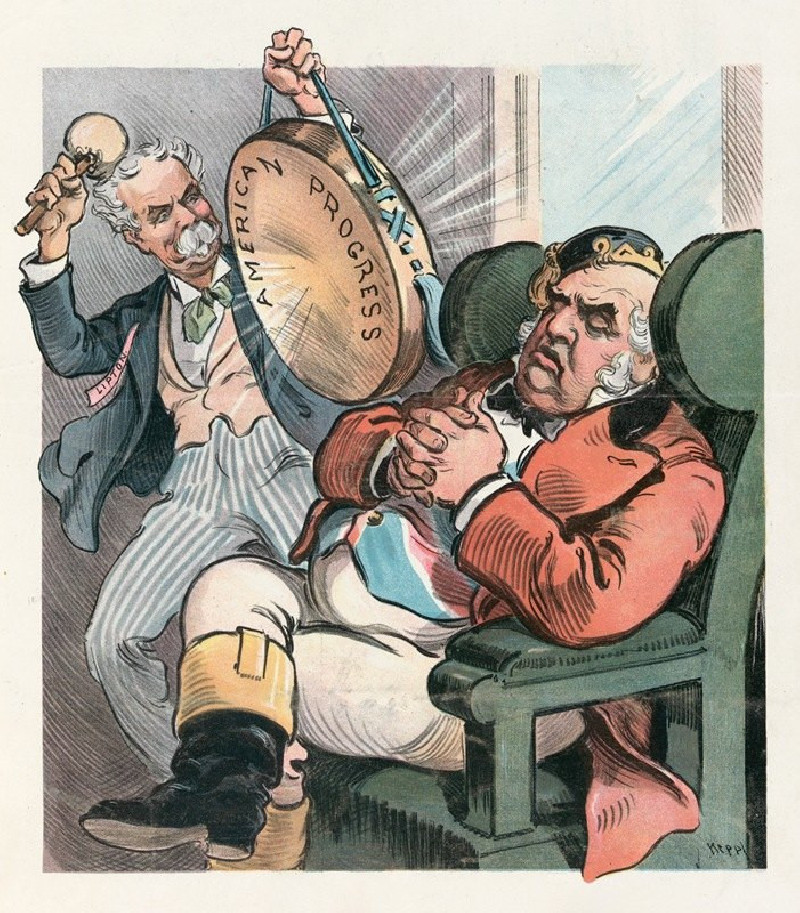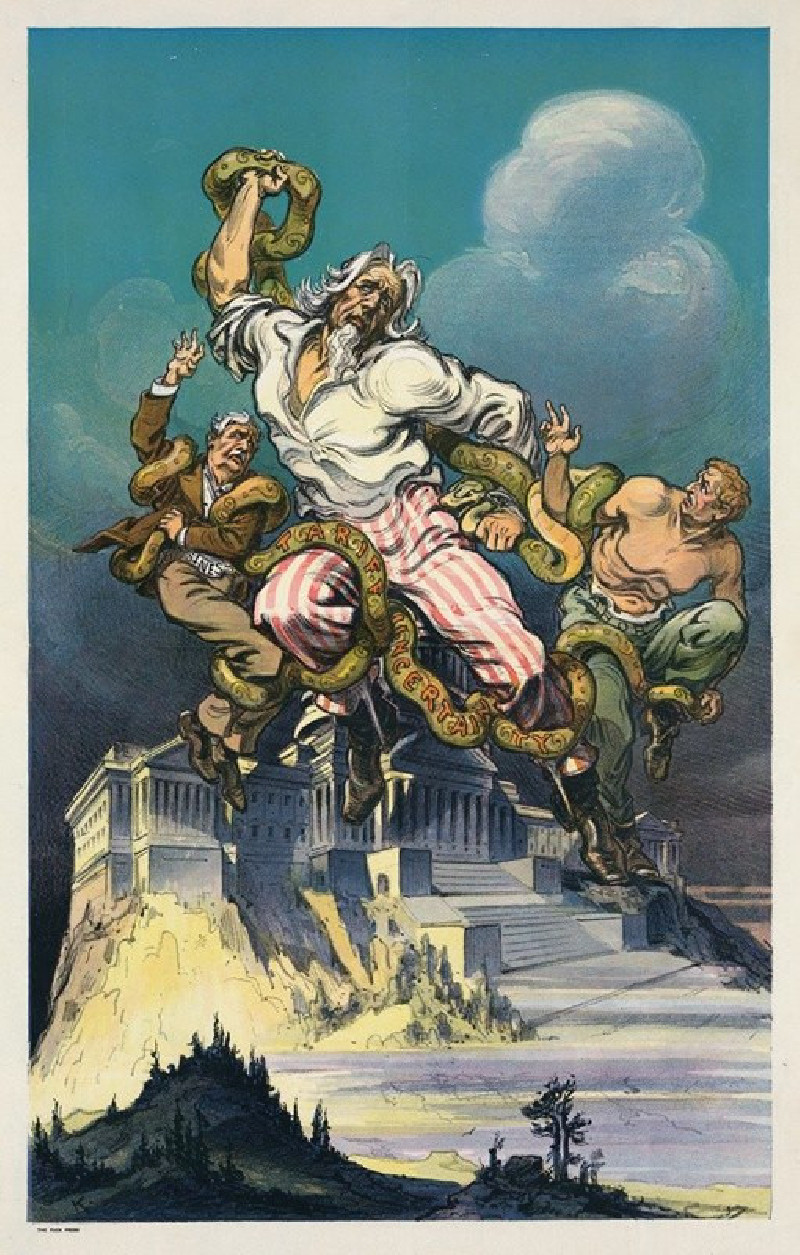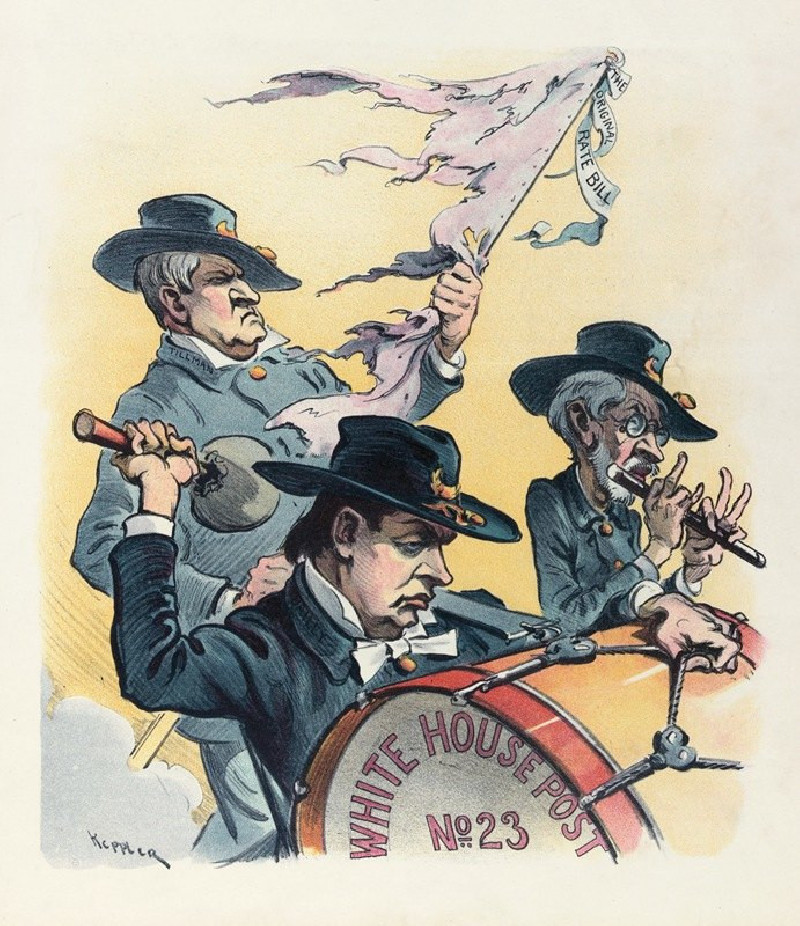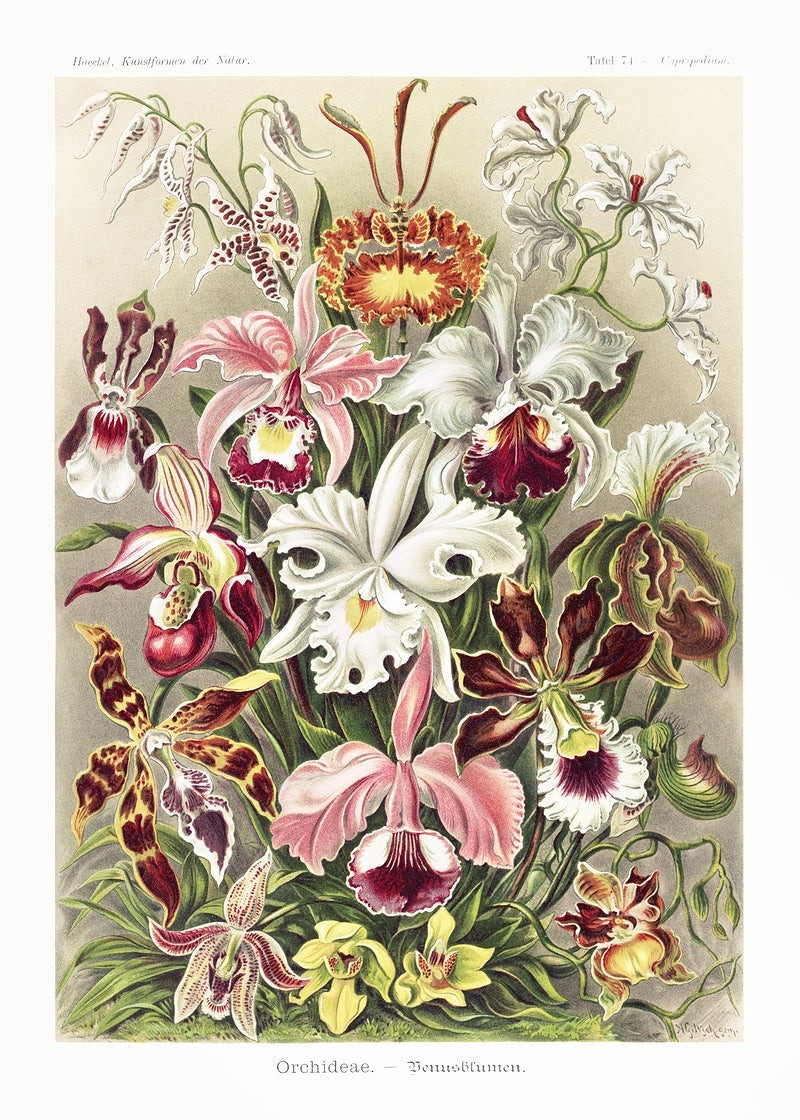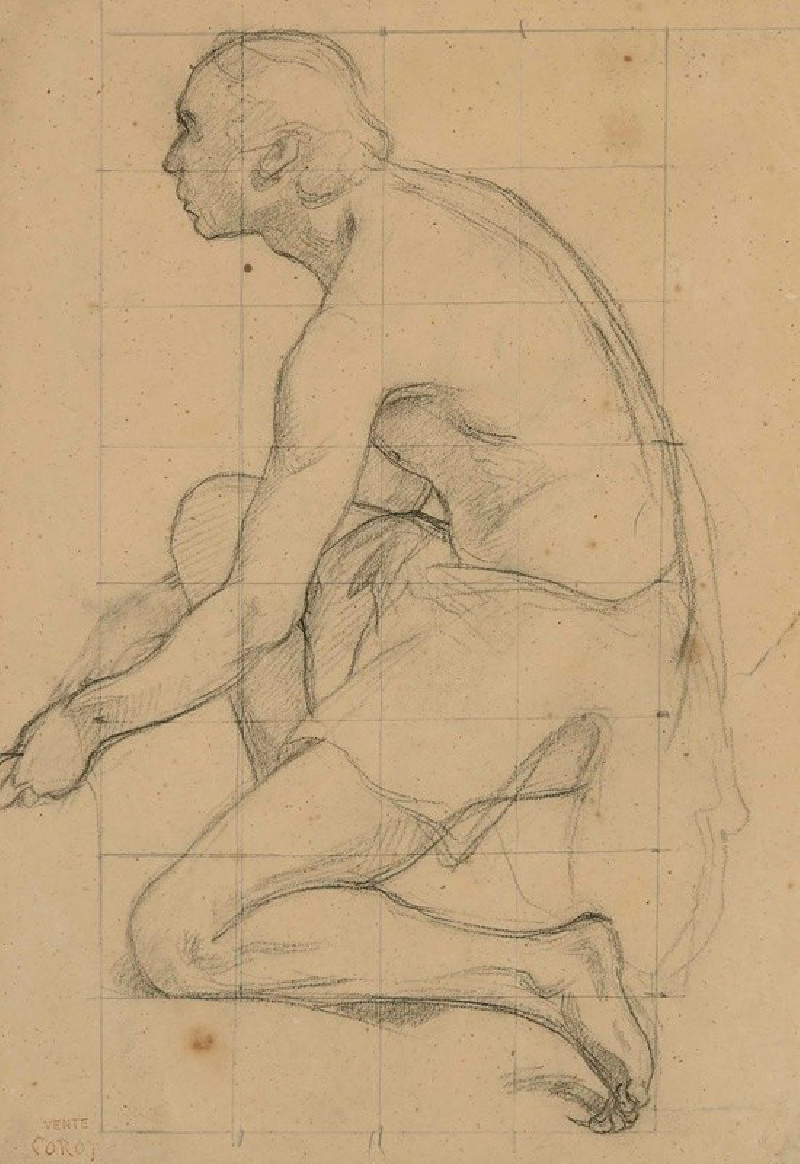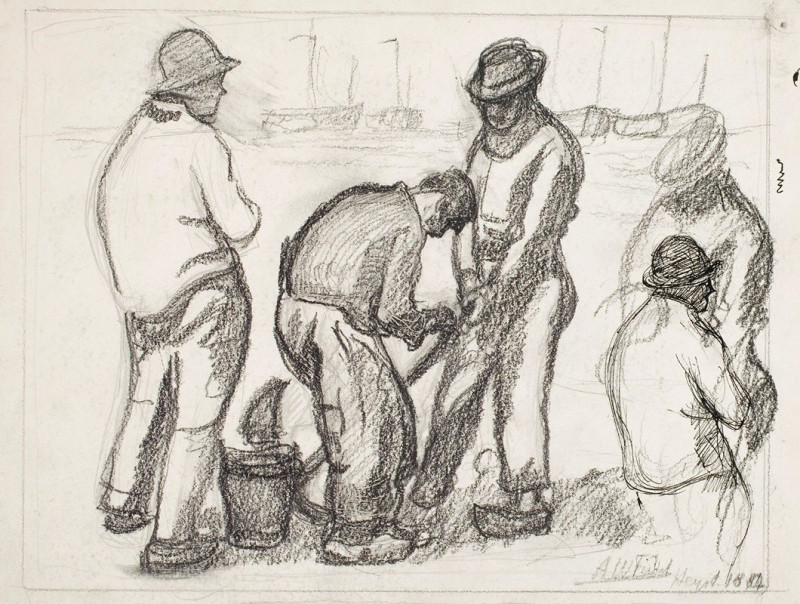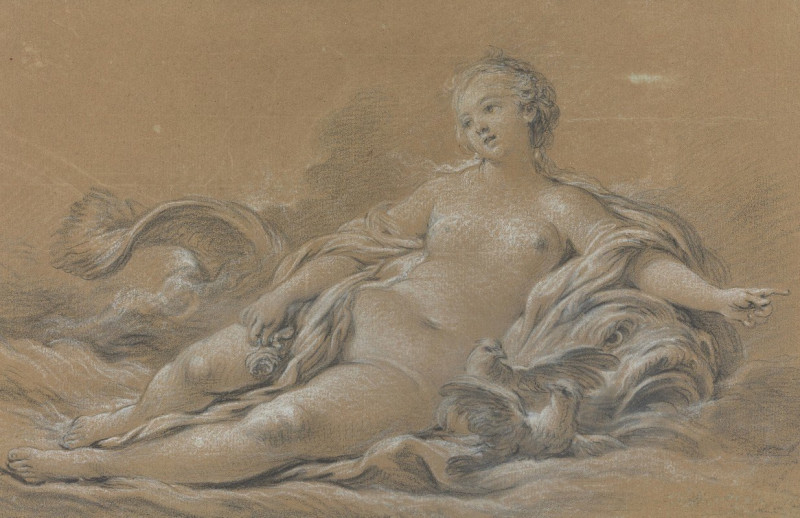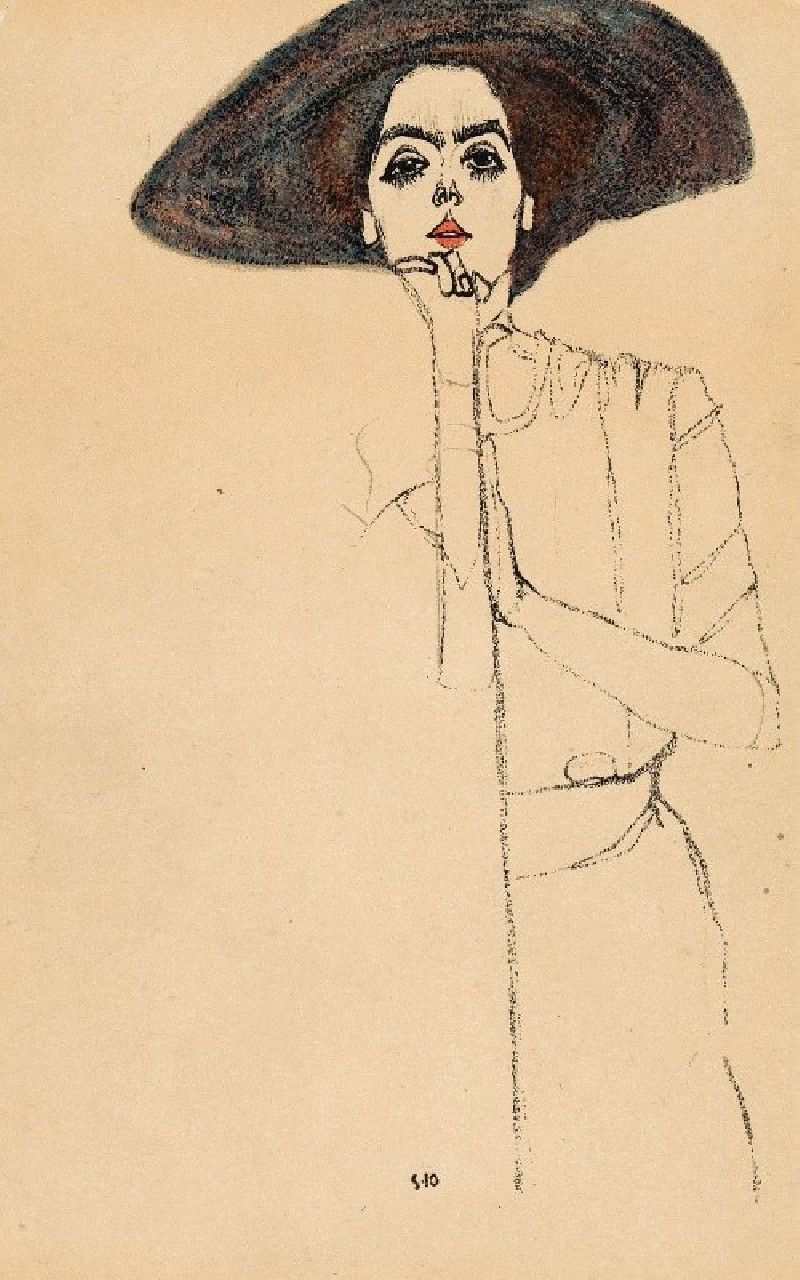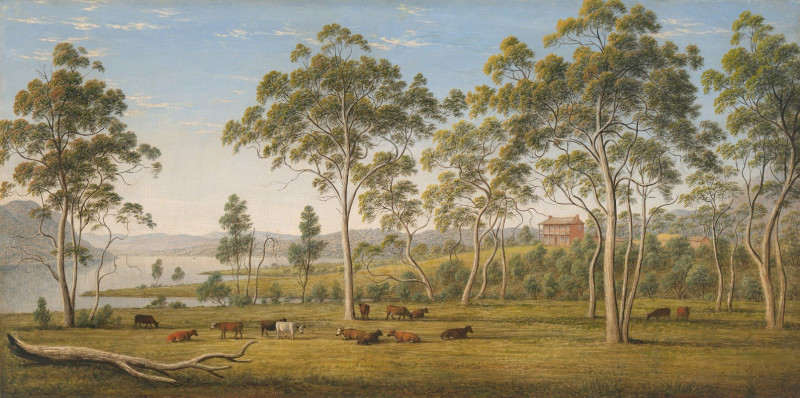A hint to the fifty-sixth Congress (1898)
Technique: Giclée quality print
Recommended by our customers
More about this artwork
Udo Keppler's 1898 painting "A Hint to the Fifty-Sixth Congress" presents a powerful visual satire, rich with political symbolism from the era. At the forefront, the artist depicts an imposing and victorious figure labeled "Sound Money," dressed as an armed Roman warrior resplendent with a cuirass that notably includes the phrase “currency reform.” The warrior wields a heavy sword, also inscribed with the word "reform," suggesting the forceful push of monetary policy reforms that were a significant issue of debate during Keppler’s time. This figure stands triumphantly over a vanquished opponent, who represents "Free Silver" - indicating the political defeat of the free silver movement, which advocated for silver in addition to gold as the basis for the dollar.The fallen character, adorned with the Statue of Liberty’s crown, a symbol synonymous with American ideals, grasps at the air, his defeat almost complete under his opponent's overwhelming weight. The visual representation serves not only as a critique but also as a striking reminder of the battles between opposing financial ideologies.The use of classical imagery combined with contemporary political themes creates a juxtaposition that emphasizes the gravity of the debate surrounding monetary policy in the late 19th century. Udo Keppler, often through his art, commented on the social and political dynamics of his time, and this painting is a vivid embodiment of his sharp critique and artistic prowess.
Delivery
Returns
Udo J. Keppler, since 1894. known as Joseph Keppler, Jr., was an American political cartoonist, publisher, and Native American advocate. The son of cartoonist Joseph Keppler (1838–1894), who founded Puck magazine, the younger Keppler also contributed to cartoons, and after his father's death became co-owner of the magazine under the name Joseph Keppler. He was also a collector of Native American artifacts.

